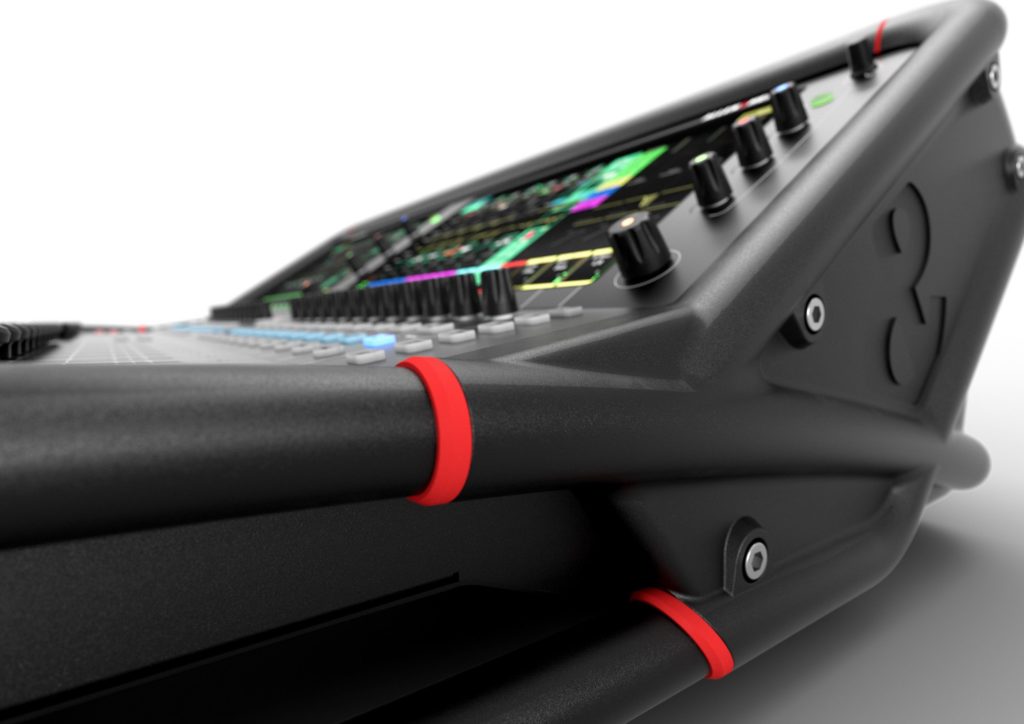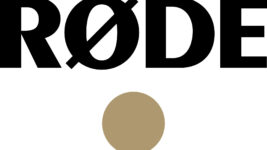Road Test
28 Oct 2020
Allen & Heath Avantis

Subscribe to CX E-News
I really like this console. While that’s my review, it doesn’t make for very exciting reading. So this is the story of why…
I like lots of consoles, but this one makes me feel especially good because I remember when A&H began in the digital console realm (OG iLive!) and I can see how much work, R&D and effort has gone into renewing and improving their digital platform.
The dLive platform has gained serious market traction and with good reason. It’s a favourite among several ‘power users’ I know, because it sounds good, it’s very versatile, and does a crazy amount of stuff.
Likely with this in mind, the dLive family has a welcome new addition in the form of Avantis. It’s not a full dLive, but it’s much more than half of one.
The overall design is stellar and it looks wicked cool – next to the Avantis, dLive looks a bit industrial, so you can see the design progression toward a friendly, approachable form.
Someone put a lot of time into making sure there are enough of all the right buttons and knobs in the right places. Ergonomically it gets a big green tick.
The processing on this console is solely contained within – it’s not just a remote for a mix rack. You can connect a bunch of different IO boxes ranging from the DX32 modular expander with analog or even PRIME input/output cards, all the way to a basic entry level AR84 box.
Add in a DX hub and you can connect 8 IO boxes (that’s good for up to 256 patchable inputs). The console has some local IO on the back panel, which is convenient and in my mind quite necessary. 12 analog inputs and outputs, stereo AES in and two stereo AES out populate the back panel, all on XLR.
Two IO ports allow for a range of different cards to be fitted – a choice of Dante, Waves, MADI, Fiber, and AES cards let you plug the Avantis into pretty well anything you like. It’s very polite in that regard.
Another nice feature is that you can route signals from one IO thing to another without taking up a processing path in the console.
Let’s talk about architecture. 64 inputs plus 12 stereo effect returns into 42 mix busses – these include things like mains, monitors and headphones. Stereo mixes count for two. I didn’t run into any limits to the configuration of these – matrix, aux, subgroup, whatever.
Seems like as long as you keep the number of busses at 42 or below, open mix architecture means just that.
The Avantis runs at 96kHz and latency through the console is 0.7mS – this is thanks to the XCVI FPGA core. In practical terms it means latency is so low it may as well be zero.
My test console came with the dPack option which includes 16 Dyn8 engines (deployable as inserts or effects), plus some cool channel compressors. I played with these but don’t feel like I quite got the hang of them.
Perhaps a bit more time required or perhaps a look at one of the excellent YouTube videos. The effects are solid, and the default allocation is well thought out and immediately useable. The compressor emulations look and sound good, and give things some character.
I was a bit devo that I couldn’t find my beloved Infra sub-harmonic synthesizer effect on my demo Avantis. Perhaps too many people blew up their subs with it?
The included automatic mic mixer is an absolute knockout, supporting up to 64 channels across three zones. When you mute a channel, it takes that channel’s bit of shared gain and distributes it among the remaining unmuted channels.
This is VERY cool because it’s exactly how a gain sharing auto mixer should work.
When you mute a channel, it takes that channel’s bit of shared gain and distributes it among the remaining unmuted channels. This is VERY cool because it’s exactly how a gain sharing auto mixer should work
Avantis has an onboard recorder which writes to a drive inside the console, the thinking here being that the recording is not going to fail due to poor write speeds on some cheapo USB stick. Transferring the recorded files over is simple and reliable even to said cheapo USB stick.
Speaking of recording, if you want to do some multitrack recording and playback that’s all pretty simple via the Dante or Waves card and the virtual patch bay.
Important note about that patchbay – you can patch a run of multiple channels quickly by simply dragging your finger across the grid. Patching functions that are limited to single channel at a time have always been a massive pain, so I like the Avantis patching system very much.
Back on the multitrack thing – there’s a virtual soundcheck mode too.
On to the interface. The dual 15.6” HD capacitive touch screens work well despite my quite blunt fingers. I can tap around the console pretty quickly and aside from the odd typo when naming things, I otherwise always hit the button I want.
I’m usually pretty anti-touch screen because I find the combination of inaccuracy and tiny buttons frustrating. This was quite refreshing – again good groundwork has gone into the interface design. The screens are pretty responsive and there’s no annoying lag waiting for things to happen.
The two banks of 12 motorised faders are completely configurable however you want – just go into strip setup then drag and drop. Switching between layers is fast and I really like how the faders physically feel.
Tactile feeling is important to me, and these are just really good faders. Again, I’ve observed a generational improvement here.
A big change is that there are no physical channel select buttons – you select a channel by tapping the strip on the screen. You can tap directly into any particular processing element – input, dynamics, EQ or inserts. So it’s fast to get to the things you need.
A swath of user keys all over the surface really let you build your show to work however you want it to. It’s pretty great, as are the definable encoders.
I like the copy / paste and especially reset functions. You can hold these buttons down then perform said operation on any part of any channel strip on the screen.
Copy a HPF from one channel to four others? No problem. Want a fader at unity? Hold reset and flick it upward, and the fader magically jumps to unity. Flicking down sends it to off. Magic!
Like everything now, the Avantis is network enabled and you can run it remotely via an iPad app. But on top of this, you can use the Custom Control app and create your own user interfaces which are stored inside the console!
Prime example of this being useful would be a solo app for an RF tech – you could put images of cast members on their solo buttons. Access to Custom Control can even be setup with different users allowed access to different elements.
It’s really clever and it’s just built in right there.
Since I didn’t have any gigs on to take it to I was stuck doing this Road Test in the office. Instead I jammed some nice multitracks into the Avantis via Dante, plugged in a set of studio monitors, and just spent some time having a mix.
It was this simple action that cemented in my head how good this console sounds. It sounds great.
So that’s the story of why the Avantis is good. Normally it would end here, but on this occasion it doesn’t. Just to validate my own office-based musings I took an unusual step and invited some industry peers to come over and spend some time with the Avantis.
Keith Cooper and Stephen Askins have both been around the block enough times to know what’s what, so in this story you get three qualified opinions for the price of one.
Stephen enjoyed the EQ, saying it was lovely to get around and so simple. He thought the automixer was good especially for corporate events, and the effects were easy to navigate.
He was also a fan of the zoomable patch screen, and the way in which elements of the interface are colour coded – both helpful features if your eyesight isn’t great.
Keith notes the physical footprint is appropriate and observes that the build quality seems good enough to withstand rugged environments and constant movement. He liked the effects and thinks the ability to flexibly assign DSP to suit your needs is a good thing.
He notes that as a digital console it sums channels well and sounds good – he’d love to spend some time hearing it with mics on the preamps.
Did I mention that I really like this console?
Product Info:
www.allen-heath.com/avantis
Australia: www.tag.com.au
New Zealand: jansen.nz
Allen & Heath Avantis – The Specs
• 96kHz 64 channel / 42 bus digital mixer
• XCVI FPGA core with ultra-low latency (0.7ms)
• Fully configurable mix bus architecture
• Super-tough, full metal chassis
• Continuity UI seamlessly connects physical and touchscreen controls for the fastest, most intuitive workflows
• dPack option adds dLive processing, including 16 Dyn8 engines, plus per-channel zero-latency DEEP Compressors and Dual-Stage Valve preamp
• 12 RackExtra FX slots with dedicated stereo returns
• 16 DCAs • Dual 15.6” Full HD capacitive touchscreens with gesture control
• AMM (Automatic Mic Mixer) up to 64 channels across 1, 2 or 4 zones
• Fully assignable layout
• 144 fader strips (24 faders, 6 layers) with optional dedicated master section
• SLink port for connection to Remote I/O Expanders and the ME Personal Mixing System
• 12 analogue XLR Inputs/12 analogue XLR Outputs
• 1 Stereo AES In / 2 Stereo AES Out
• 2 I/O Ports, both capable of 128×128 operation at 96kHz – for optional cards inc. Dante, MADI and gigaACE
• User configurable rotary controls
• 24 assignable SoftKeys • Comprehensive metering with multi-point peak detection
• Internal storage for stereo playback and recording
• USB stereo playback
• BNC Word Clock

CX Magazine – October 2020
LIGHTING | AUDIO | VIDEO | STAGING | INTEGRATION
Entertainment technology news and issues for Australia and New Zealand
– in print and free online www.cxnetwork.com.au
© VCS Creative Publishing
Subscribe
Published monthly since 1991, our famous AV industry magazine is free for download or pay for print. Subscribers also receive CX News, our free weekly email with the latest industry news and jobs.





















